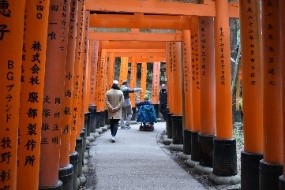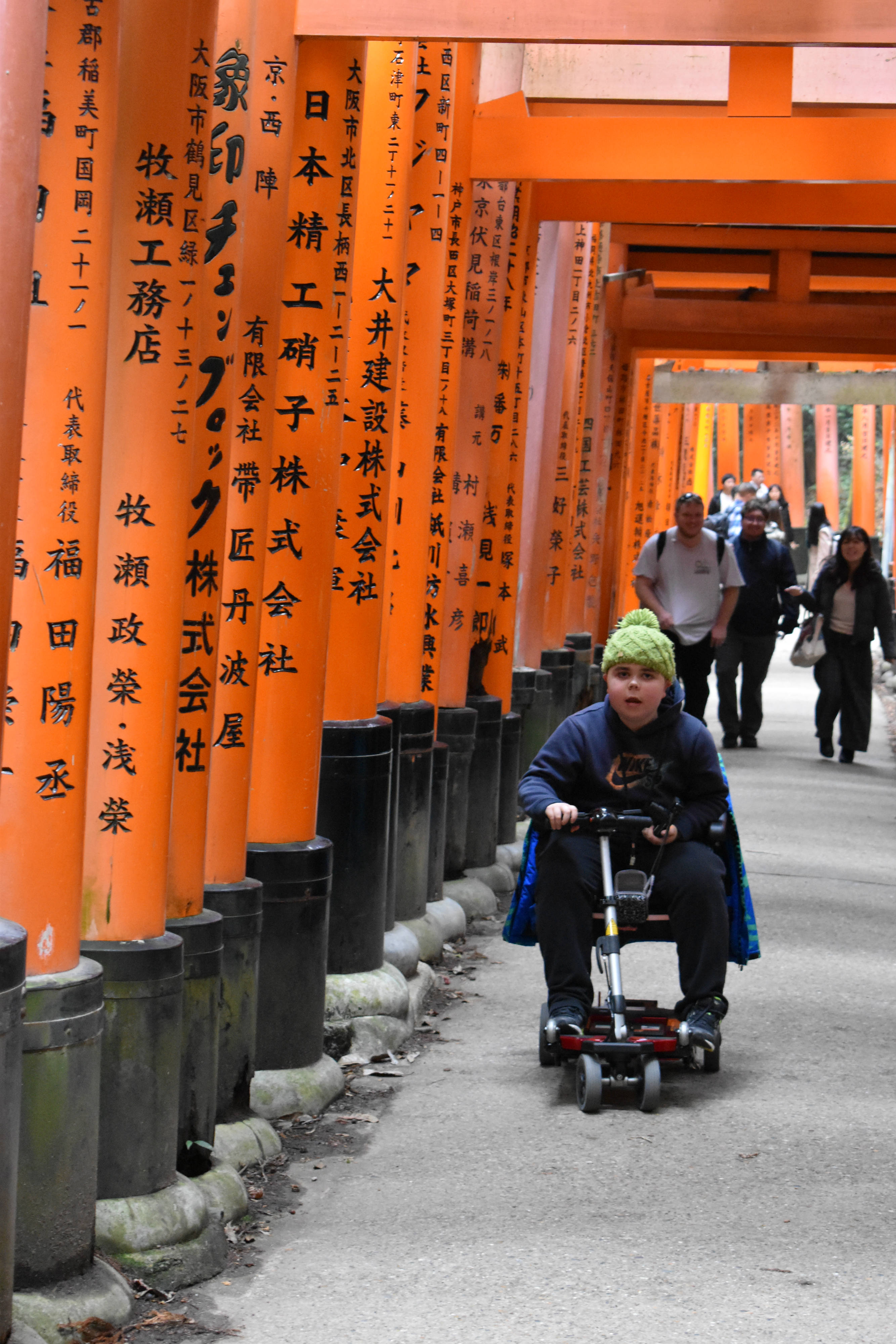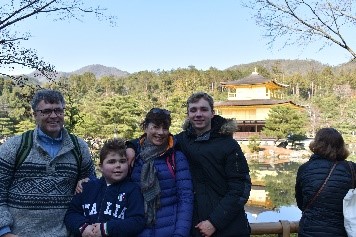This website uses cookies to improve your experience. We'll assume you're ok with this, but you can opt-out if you wish.
Allow time to get clearance documents from the hospital, for dangerous goods (lithium ion batteries), tickets to Studio Ghibli, accommodation. Like Santa, check it twice (or more).
Remind travellers that wish lists are just that; there will be additions and deletions. Delete multiple book and stationery shops. Go with the flow. Tricky with boys that have OCD tendencies.
Japanese food is justifiably world renowned. Try the takoyaki (octopus balls), the okonomiyaki, yakitori, the Shabu Shabu, the sushi bars, exquisitely fresh sashimi at the Tsujiki markets, tiny ramen nooks, baby octopus stuffed with quail egg ‘brains’, mochi and black eggs cooked in the volcanic gases of Oyakudani, near Mt Fuji.

While ryokans are undoubtedly a lovely experience, hotels are a better choice for those who need elevators and don’t find tatami mats comfortable for sleeping or eating. Look for locations close to stations for convenience. Always check room size. We hadn’t planned to stay in a capsule hotel or a caravan but our room near Ginza was minute.
Trip to Japan: expensive. Pocari Sweat at the train station stall: 150 yen (<$2). Joy on the old woman’s face when Jamie tried out some Japanese: priceless. Google Translate helps and the station staff have some very good little babel fish.


Always know where your mobility device charger is (unless you need the adrenalin of a Disney extreme ride). Take it with you on day outings. Sometimes, it’s possible to recharge at lunch, at a temple or while on Disney rides.
Odds are that you’ll lose something. It won’t be weight (see Food tip), it can’t be your charger or JR pass, it might be each other or your sanity (see Geotag and Zen tips).
Pack light but warm. Small wheelie bags are best for getting around. The shopping is amazing, keep some room spare. The Japanese are almost invariably beautifully dressed in jackets and hats. So are their children – and their dogs. Accept that you may not be and move on.
Japan is a stunning country of colour and contrast. However, if you insist on walking across Shibuya scramble crossing (the busiest in the world), don’t stop to take photos. Jamie, you stopped traffic.

Teenagers, enough said. See Accessibility, Sanity, Geotag and Eat Local.
Some will be unexpectedly great: Tokyo National Museum was closed so we went to another and found a fabulous exhibition on modern calligraphy as art. We visited Mt Fuji on a clear day. Kyoto is packed with amazing sights. Some will be not so great: See Accommodation. 3 hour queues for “big” rides at Tokyo Disney Sea. Cyclones threatening connecting flights. Some will fall in the uniquely Japanese category of quirky or WTF. Hedgehog and owl cafes are not a must do.
In Japan, they deserve their own category. Even demountables on mountain paths to the snow monkeys have heated seats. Hotels in Australia could take inspiration from the luxury and pristine state of facilities in major railway stations. On board accessible facilities are great. Try all the buttons. I think we’ll be renovating.
It’s a busy place. You can be swept away in the swarm of a station or market so easily. Thankfully, our older one is taller than the average local and Jamie loves to wear a distinctive green beanie, and is not averse to using his scooter horn.
Distances are not always to scale or what they appear. See Charger tip.
You might find it in fresh snow falling on Christmas Eve, soaring bamboo groves or a sublimely fresh sashimi. You’ll need to recall that Zen while navigating train stations, waiting in queues (a refined national pastime) or squishing another person in the lift.
Ride the ultra-comfortable Shinkansen for a day. Or spend the day watching wacky Japanese TV on New Year’s Day when everything is closed.
A pleasant surprise. Most train stations have elevators, they’re well marked, bus staff in Kyoto are very happy to help with a ‘slope’ and many major attractions, including temples, have an alternate accessible route. Check the excellent websites available to help you plan.
Learn the protocol, then ring the temple bells, douse yourself in incense smoke, buy a charm or shake out your fortune. Exception: don’t get in the onsen unless you can get out whilst keeping your facecloth sized towel in place for a little modesty.
OK, so not a strong family trait. In Japan, you’ll need to be the water that flows around the bureaucratic rocks. Powered mobility seems rare so be prepared to explain as you come up against unexpected obstacles. Some did not recognise that the scooter was a necessity (not a toy), so required that it be folded up, with Jamie transferred to a wheelchair and ushered onto the train by a station guard. Many shops in Tokyo are vertical, 7 floors of fabulousness, with only one tiny elevator.
The space, the fresh fruit and veg, your dog (who does not dress up or travel by pram) and the warmth, amongst many things. And if you have taken nearly 1000 photos (Jamie), enjoy editing them, be inspired and be grateful that you experienced so much, not sad that it’s over.
This Spinal Muscular Atrophy (SMA) Awareness month, we’re celebrating the people who redefine what’s possible living with a neuromuscular condition. Carolyn is one of them.
Say hello & contact our friendly team today.
Email: info@mdnsw.org.au
Phone: (02) 9888 5711
Freecall: 1800 635 109
Phone: (02) 9888 5711
Freecall: 1800 635 109
Email: info@mdnsw.org.au
Postal Address: PO Box 3071, North Strathfield NSW 2137
Muscular Dystrophy NSW would like to acknowledge the Traditional Custodians of the land on which we live and work, and we pay our respects to their Elders past and present. We extend that respect to all Aboriginal and Torres Strait Islander peoples.
"*" indicates required fields